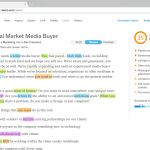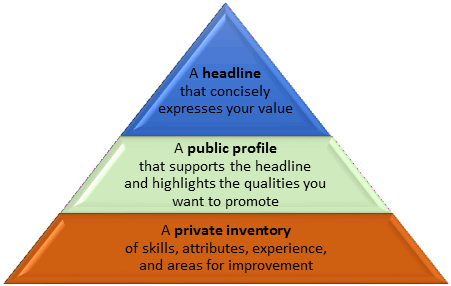 The last few decades have been marked by waves of technology-driven innovation in business communication, starting with digital’s disruption of print communication, then social media giving a voice to everyone in the marketplace, followed by the way mobile is freeing communicators from their desks.
The last few decades have been marked by waves of technology-driven innovation in business communication, starting with digital’s disruption of print communication, then social media giving a voice to everyone in the marketplace, followed by the way mobile is freeing communicators from their desks.
We’re well into the next wave, and this one could be the most intriguing and far-reaching of all: the application of artificial intelligence to enhance the communication experience. Starting with the upcoming 13th Edition of Excellence in Business Communication (releasing in January 2019) we are covering communication uses of AI that students are likely to encounter on the job or in their job-search efforts.
The Recent Explosion of Business AI
Although “artificial intelligence” still has a science fiction ring to it, forms of AI are now used extensively in business and business communication. It’s a virtual guarantee that your students are already experiencing AI as consumers—Amazon, Apple, Facebook, Google, Microsoft, Netflix, and Spotify are just a few of the companies that rely on AI to deliver their services.
Research in AI has been going on for more than a half century, but the practical outcomes never really lived up to hopes until recently, when several developments converged within the space of a few years. First, the primary focus of the research shifted from pursuing the generalized, humanlike intelligence of science fiction (sometimes called general AI or strong AI) to developing specialized systems aimed at handling specific tasks such as reading text or recognizing images (called narrow AI or weak AI). Second, an AI method involving neural networks, which emulate the function of neurons in the brain, was refined in a way that made it much more powerful. And third, several critical computer capabilities became available around the same time: massive sets of data that AI systems could learn from, low-cost storage to handle all that data, and fast processors capable of handling the number-crunching that the most-common AI approaches require.
Communication Applications of AI
Thanks to these developments, AI is now being applied in virtually every functional area of business. Many of these applications involve business communication, including augmented writing, automated writing, emotion recognition, job applicant evaluation systems, chatbots and taskbots, robotic process automation, cognitive automation, voice recognition, real-time voice translation, and augmented ability systems. Here are a few specific examples:
- Businesses use text mining for social listening—identifying themes (such as prevailing customer sentiment or threats to a company’s reputation) hidden in mountains of written information, from Twitter and Facebook posts to customer emails and surveys. The Clarabridge image shown above (click on the thumbnail for a larger version) illustrates the use of social listening in the hospitality industry.
- The Textio augmented-writing system gives company recruiters real-time writing feedback while they draft job postings. By analyzing hundreds of millions of postings and comparing the candidate pools they attracted, the system is figuring out the most compelling way to describe job opportunities. Plus, the system can help writers avoid biased or exclusionary language by showing how various demographic groups respond to different word choices.
- Any of your students who play fantasy football on Yahoo! Sports might be intrigued to know that the game summaries they receive each week are written by an AI system.
From a user’s perspective, AI-enhanced communication isn’t skills-based to the same degree as social media and mobile communication, but we believe it has become a vital topic to address in any well-rounded business communication course. In future posts, we’ll explore many of these applications and discuss how they are giving professionals powerful new tools to improve communication efficiency and effectiveness.
Adapted from Excellence in Business Communication, 13th Edition, Pearson, 2020.
Image: Courtesy Clarabridge


 Most students preparing to enter or reenter the job market have probably heard the advice to develop a personal brand but might not know how to proceed. Here are five steps that can make the task feel easier and more authentic.
Most students preparing to enter or reenter the job market have probably heard the advice to develop a personal brand but might not know how to proceed. Here are five steps that can make the task feel easier and more authentic.
